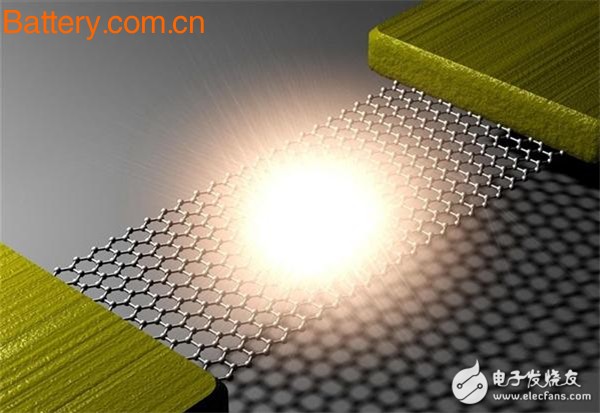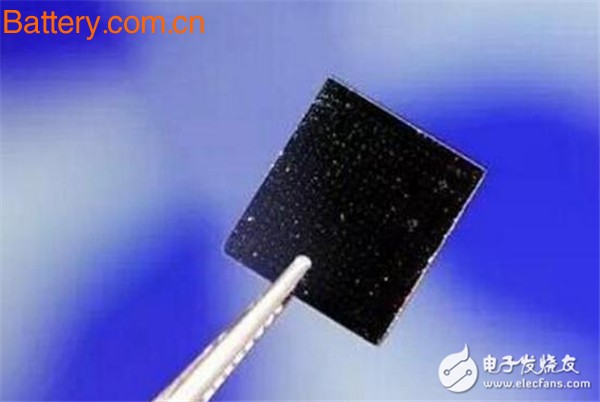A new "black technology" is graphene technology, which is now available. According to reports, the use of graphene polymer materials produced by the car battery is expected to achieve such an amazing effect: only a few minutes of charging, the car can continue to drive 1000 kilometers. This technology is close to achieving breakthroughs in Spain and South Korea. According to French media, Spain's Grapheno (a company that produces graphene on an industrial scale) has collaborated with the University of Corvado in Spain to produce the first graphene polymer battery, which has three times the storage capacity of the best products in the market. An electric car powered by this battery can travel up to 1000 kilometers and its charging time is less than 8 minutes. Graphene battery concept Graphene is the thinnest and hardest material in the world. It was launched in 2004 and its discoverer, Professor André Heim of the University of Manchester, UK, won the Nobel Prize in Physics in 2010. Graphene battery, a new energy battery developed by utilizing the characteristics of rapid ion transport of lithium ions between the surface of the graphene and the electrode. The principle of graphene battery The graphene battery is self-charged using ambient heat. The relationship between time (hours, days) and voltage generation of a graphene battery in a saturated copper chloride solution. The experimentally fabricated circuit contained LEDs that were connected to ribbon graphene by wires. They simply placed graphene in a copper chloride solution for observation. The LED light is on. In fact, they need six graphene circuits to form a series, so that the required 2V can be generated, and the LED light can be illuminated to get the picture. Xu Zihan and colleagues said that the occurrence here is that copper ions have a double positive charge, and the speed of passing through the solution is about 300 meters per second because of the thermal energy of the solution at room temperature. When an ion violently strikes a graphene ribbon, the collision produces enough energy to cause the electrons that are not in the field to leave the graphene. There are two choices for electrons: you can leave the graphene band, combine with copper ions, or pass through graphene to enter the circuit. It turns out that flowing electrons are faster in graphene than they pass through the solution, so the electrons naturally choose the path through the circuit. It is this that illuminates the LED lights "the electrons released tend to pass through the graphene surface rather than entering the electrolyte. The device produces voltage like this," Xu Zihan said. Therefore, the energy generated by this device comes from the heat of the surrounding environment. They can increase the current, just heat the solution, or use ultrasonic waves to accelerate the copper ions. By relying on the surrounding heat, they can keep their graphene batteries running for 20 days. However, there is an important question mark. Another assumption is that a chemical reaction produces electricity, just like a normal battery. However, Xu Zihan and colleagues said that they ruled out this because several sets of control experiments were conducted. However, these are introduced in some supplemental materials that do not seem to be on the arXiv website. They need to be open before someone else makes a serious statement. From the perspective of surface value, this seems to be a very important outcome. Others also generate overcurrents in graphene, but only let water flow through it, so this is not really surprising, and moving ions can also produce this effect. This heralds a clean green battery that relies solely on ambient heat. Xu Zihan and colleagues said: "This represents a huge breakthrough, the study is self-driven technology." But this is just one of the magical applications of graphene. It is said that if the graphene material replaces silicon, it is expected to make the computer processor run hundreds of times faster; graphene is expected to revolutionize the touch screen and display products, producing a foldable, telescopic display device; graphene strength exceeds the number of steel Ten times, it is expected to be used in the manufacture of ultra-light aircraft materials, ultra-tough body armor and so on. But this is just one of the magical applications of graphene. It is said that if the graphene material replaces silicon, it is expected to make the computer processor run hundreds of times faster; graphene is expected to revolutionize the touch screen and display products, producing a foldable, telescopic display device; graphene strength exceeds the number of steel Ten times, it is expected to be used in the manufacture of ultra-light aircraft materials, ultra-tough body armor and so on. What exactly is graphene? It is actually a two-dimensional crystal with a thickness of one atom, which is separated from the graphite material and composed of carbon atoms. It is currently the thinnest and strongest material in nature. The significance of graphene battery application The successful development of this product has completely opened up the application space of graphene in lithium batteries for consumer electronics lithium batteries, power lithium batteries and energy storage. The battery cycle life is up to 3,500 times, and the charging efficiency is 24 times that of ordinary charging products. If the graphene material can be successfully applied in a lithium ion battery, the charging and discharging speed of the lithium ion battery can be greatly improved. The material has excellent electrochemical energy storage characteristics, and it can be recharged more than 50,000 times in addition to ultra-fast charge and discharge, which is expected to bring revolutionary changes to the battery industry. Battery life How strong is the measurement of a DC's battery life? Japan's "Camera and Imaging Products Association CIPA" developed the digital camera power test standard, the test method is to shoot a picture every 30 seconds after the boot, the flash flashes every two times, before each shot, you must first move the telescopic lens, LCD The screen stays on, after 10 shots, turn it on, then come back again until the LCD screen doesn't turn on or you can't shoot. If the product specification states the CIPA standard, such a figure has a reference value. The actual working hours of the battery often change with the conditions or environment in which it is stored or used, so we should not be confused by these values. to sum up This breakthrough study brings new discoveries to the material properties of human cognitive graphene and is expected to revolutionize fuel cell and hydrogen related technologies. Golf Mat,Indoor Golf Mat,Outdoor Golf Mat,Golf Practice Mat Shenzhen New Gaopin Sports Goods Co,Ltd , https://www.newgaopin.com

Interrupting the application door to interpret the endurance ability and application significance of graphene power battery